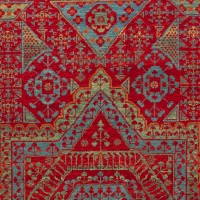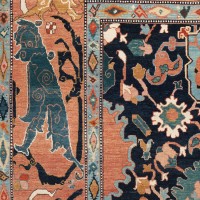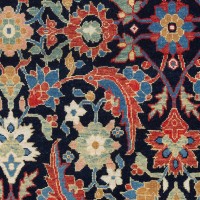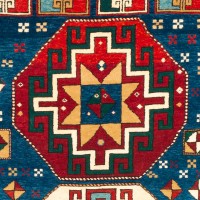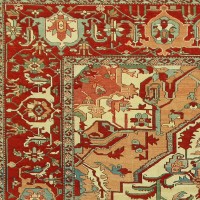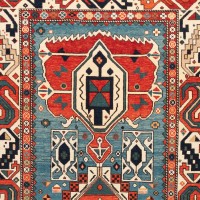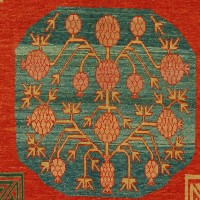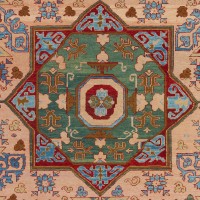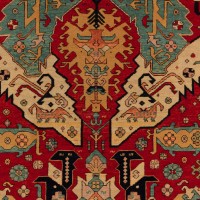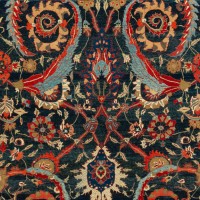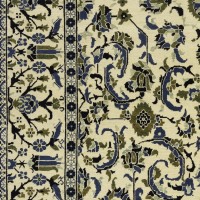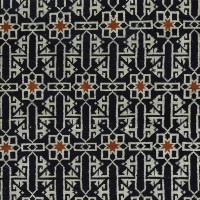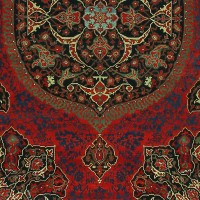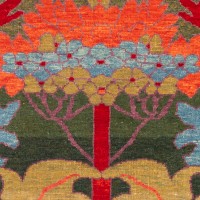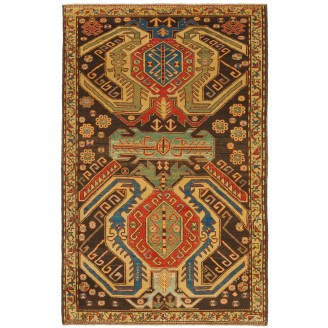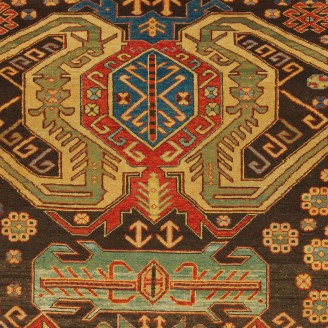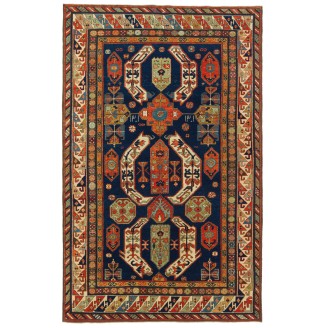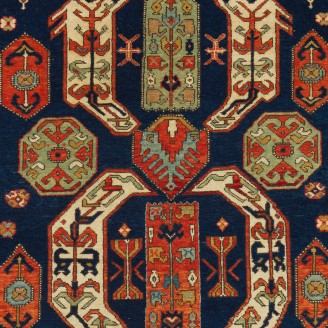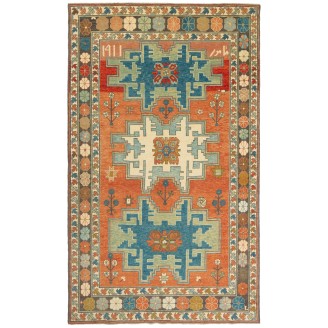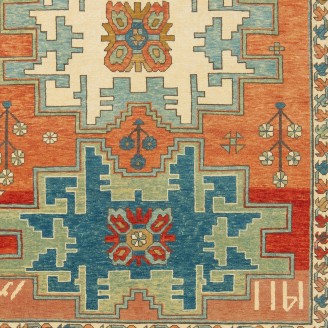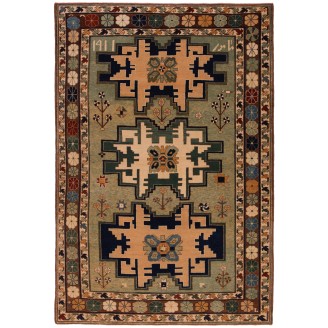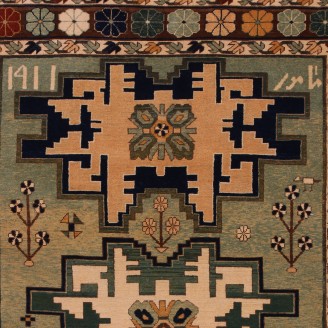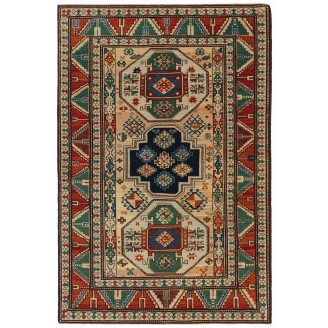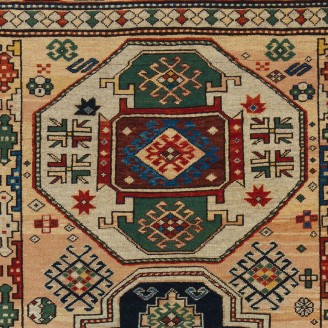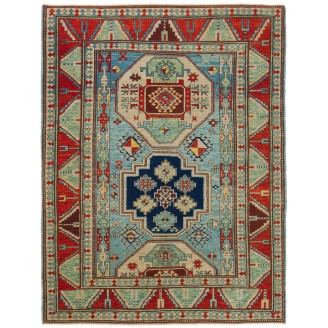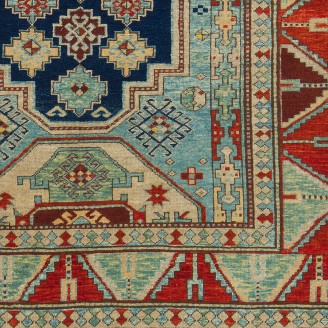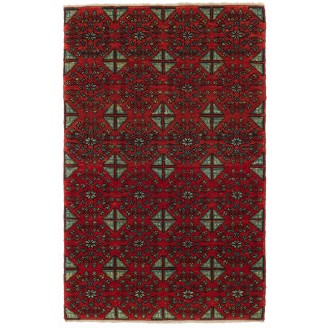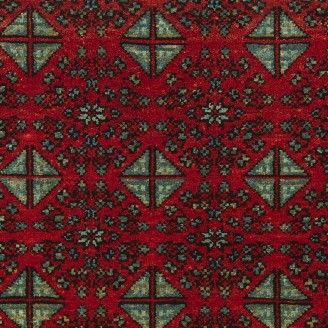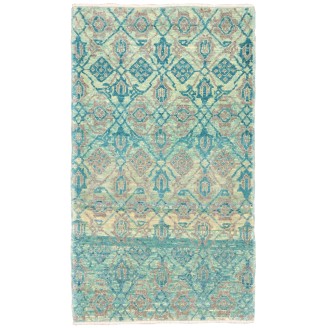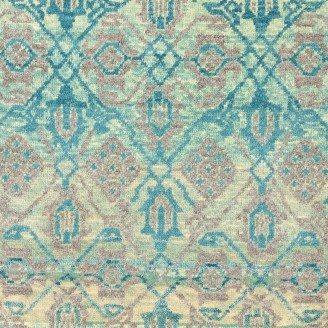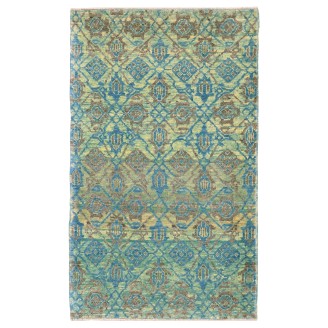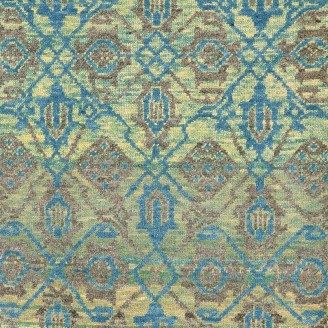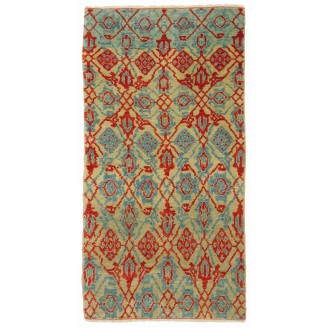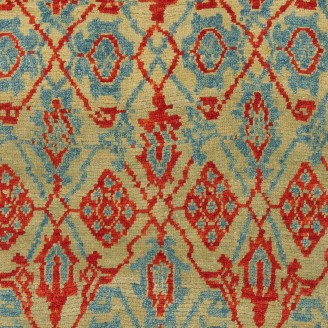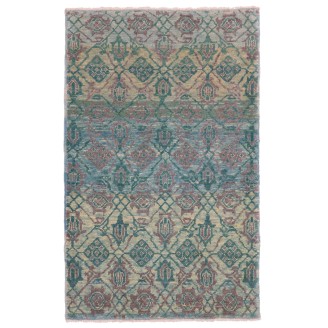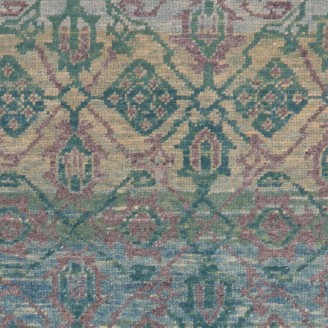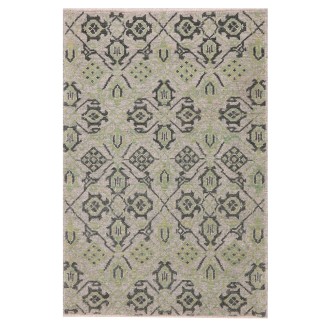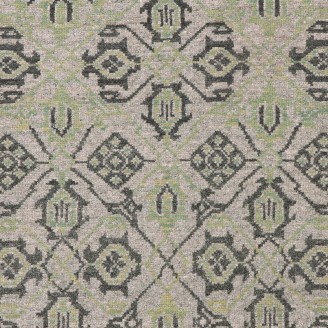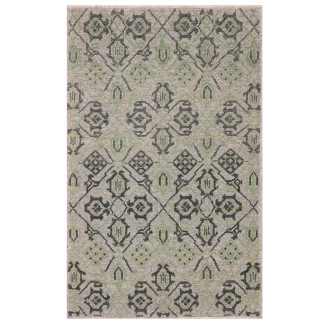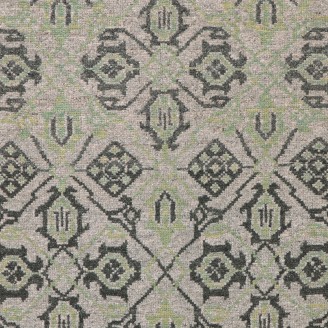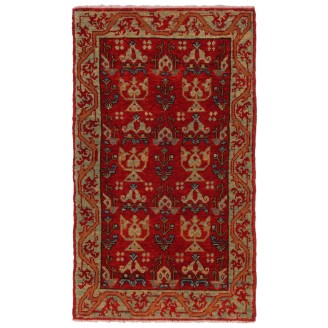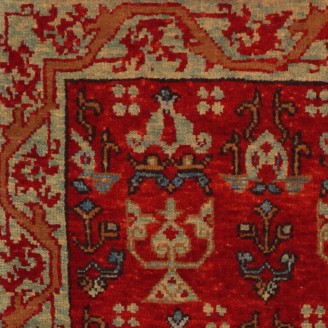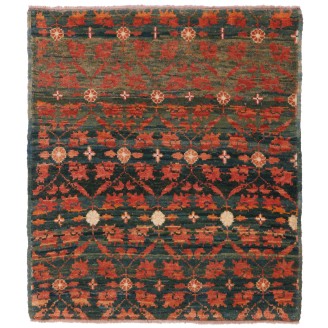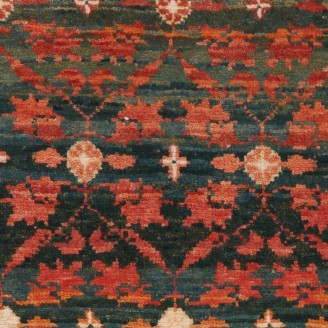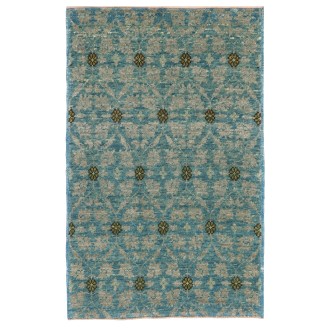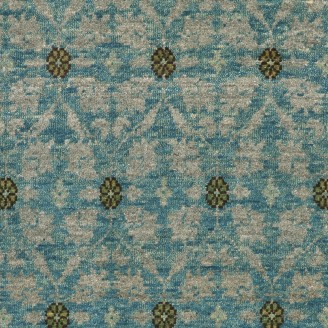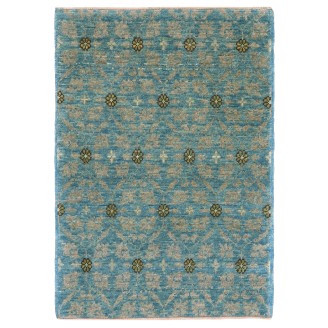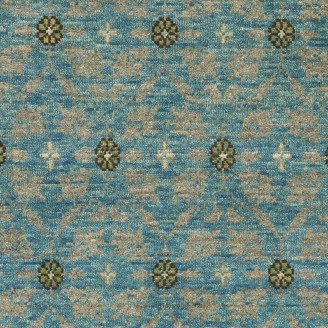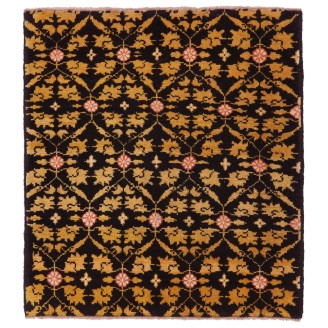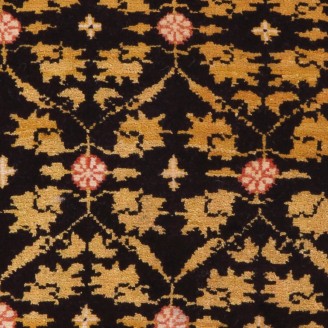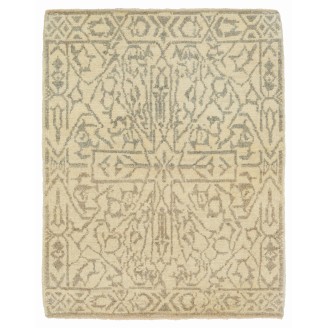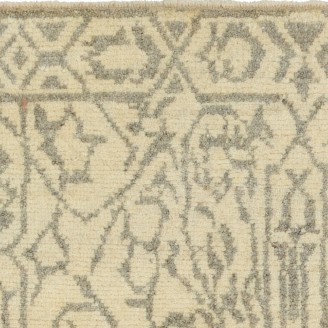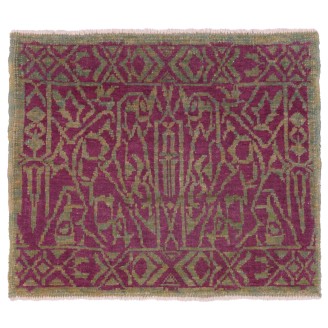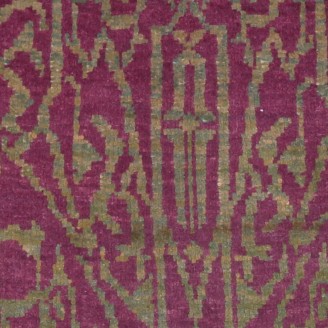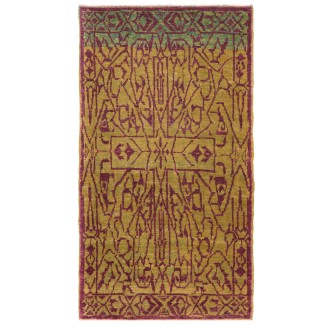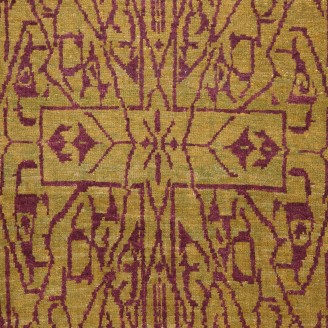Model: ART00450
Dimensions: 4'3" X 6'7"(130cm x 203cm)
The source of the rug comes from the book Oriental Rugs Volume 1 Caucasian, Ian Bennett, Oriental Textile Press, Aberdeen 1993, pg.160. A distinctive group of Talish rugs is named after the southeast coastal town of Lenkoran. They are distinguished primarily by their design, which consists almost al..
Price:
$2,950
Ex Tax:$2,950
Model: ART00442
Dimensions: 5'8" X 9'0"(175cm x 275cm)
The source of the rug comes from the book Tapis du Caucase - Rugs of the Caucasus, Ian Bennett & Aziz Bassoul, The Nicholas Sursock Museum, Beirut, Lebanon 2003, nr.52. This is a unique geometric design rug from the late 19th century, Lenkoran region, Caucasus area. These made their first recognizab..
Price:
$4,900
Ex Tax:$4,900
Model: ART00415
Dimensions: 5'10" X 9'7"(178cm x 293cm)
The source of the rug comes from the book Tapis du Caucase - Rugs of the Caucasus, Ian Bennett & Aziz Bassoul, The Nicholas Sursock Museum, Beirut, Lebanon 2003, nr.45 and Oriental Rugs Volume 1 Caucasian, Ian Bennett, Oriental Textile Press, Aberdeen 1993, pg.326 and Caucasian Carpets, E. Gans-..
Price:
$6,000
Ex Tax:$6,000
Model: ART00399
Dimensions: 5'10" X 8'5"(178cm x 257cm)
The source of the rug comes from the book Tapis du Caucase - Rugs of the Caucasus, Ian Bennett & Aziz Bassoul, The Nicholas Sursock Museum, Beirut, Lebanon 2003, nr.45 and Oriental Rugs Volume 1 Caucasian, Ian Bennett, Oriental Textile Press, Aberdeen 1993, pg.326 and Caucasian Carpets, E. Gans-Reud..
Price:
$5,100
Ex Tax:$5,100
Model: ART00538
Dimensions: 4'11" X 7'3"(150cm x 223cm)
The source of the rug comes from the book Oriental Rugs Volume 1 Caucasian, Ian Bennett, Oriental Textile Press, Aberdeen 1993, pg.24. This is a medallion rug from the late 19th century, Lori-Pambak region, Caucasus area. Lori-Pambak, a village in the west central Caucasus has been attributed to a g..
Price:
$3,250
Ex Tax:$3,250
Model: ART00451
Dimensions: 4'11" X 6'6"(152cm x 199cm)
The source of the rug comes from the book Oriental Rugs Volume 1 Caucasian, Ian Bennett, Oriental Textile Press, Aberdeen 1993, pg.24. This is a medallion rug from the late 19th century, Lori-Pambak region, Caucasus area. Lori-Pambak, a village in the west central Caucasus has been attributed to a g..
Price:
$3,400
Ex Tax:$3,400
Model: ART00080
Dimensions: 1'9" X 2'9"(54cm x 84cm)
The source of the rug comes from the book Völker, Angela, Die Orientalischen Knüpfteppiche das MAK, Vienna: Böhlau, 2001: 42–5. The rug with the central star was designed in the early 16th-century rug by Mamluk Sultane of Cairo, Egypt. It is exhibited at MAK – Museum of Applied Arts, Vienna Austria...
Price:
$825
Ex Tax:$825
Model: ART00223
Dimensions: 1'8" X 2'10"(52cm x 87cm)
This lattice pattern is composed of palmettes and leaves filling the various compartments against the imposing ground. One has the impression that it is only part of a larger scheme designed 15th-century rug from the Mamluk era, Cairo region, Eygpt. These designs have often been described as wagireh..
Price:
$825
Ex Tax:$825
Model: ART00224
Dimensions: 1'8" X 2'9"(52cm x 85cm)
This lattice pattern is composed of palmettes and leaves filling the various compartments against the imposing ground. One has the impression that it is only part of a larger scheme designed 15th-century rug from the Mamluk era, Cairo region, Eygpt. These designs have often been described as wagireh..
Price:
$825
Ex Tax:$825
Model: ART00062
Dimensions: 1'8" X 3'2"(51cm x 99cm)
This lattice pattern is composed of palmettes and leaves filling the various compartments against the imposing ground. One has the impression that it is only part of a larger scheme designed 15th-century rug from the Mamluk era, Cairo region, Eygpt. These designs have often been described as wagireh..
Price:
$825
Ex Tax:$825
Model: ART00148
Dimensions: 1'8" X 2'9"(53cm x 84cm)
This lattice pattern is composed of palmettes and leaves filling the various compartments against the imposing ground. One has the impression that it is only part of a larger scheme designed 15th-century rug from the Mamluk era, Cairo region, Eygpt. These designs have often been described as wagireh..
Price:
$825
Ex Tax:$825
Model: ART00118
Dimensions: 1'10" X 2'9"(58cm x 85cm)
This lattice pattern is composed of palmettes and leaves filling the various compartments against the imposing ground. One has the impression that it is only part of a larger scheme designed 15th-century rug from the Mamluk era, Cairo region, Eygpt. These designs have often been described as wagireh..
Price:
$825
Ex Tax:$825
Model: ART00119
Dimensions: 1'10" X 2'10"(56cm x 87cm)
This lattice pattern is composed of palmettes and leaves filling the various compartments against the imposing ground. One has the impression that it is only part of a larger scheme designed 15th-century rug from the Mamluk era, Cairo region, Eygpt. These designs have often been described as wagireh..
Price:
$825
Ex Tax:$825
Model: ART00169
Dimensions: 1'8" X 2'9"(51cm x 85cm)
The source of the rug comes from the possession of Endre Unger, which was sold at Sotheby’s in 1992. That rug with the central star was designed in the early 16th-century rug by Mamluk Sultane of Cairo, Egypt. The interpreted design is composed of candelabra Elems and motifs rows filling the various..
Price:
$825
Ex Tax:$825
Model: ART00465
Dimensions: 2'1" X 2'4"(65cm x 73cm)
The source of carpet comes from the book Völker, Angela, Die orientalischen Knüpfteppiche das MAK, Vienna: Böhlau, 2001: 42–5. This rug with the central star was designed in the early 16th-century rug by Mamluk Sultane of Cairo, Egypt. It is exhibited at MAK – Museum of Applied Arts, Vienna Austria...
Price:
$640
Ex Tax:$640
Model: ART00122
Dimensions: 1'9" X 2'9"(55cm x 84cm)
The source of carpet comes from the book Völker, Angela, Die orientalischen Knüpfteppiche das MAK, Vienna: Böhlau, 2001: 42–5. This rug with the central star was designed in the early 16th-century rug by Mamluk Sultane of Cairo, Egypt. It is exhibited at MAK – Museum of Applied Arts, Vienna Austria...
Price:
$825
Ex Tax:$825
Model: ART00123
Dimensions: 1'10" X 2'6"(56cm x 78cm)
The source of carpet comes from the book Völker, Angela, Die orientalischen Knüpfteppiche das MAK, Vienna: Böhlau, 2001: 42–5. This rug with the central star was designed in the early 16th-century rug by Mamluk Sultane of Cairo, Egypt. It is exhibited at MAK – Museum of Applied Arts, Vienna Austria...
Price:
$825
Ex Tax:$825
Model: ART00464
Dimensions: 2'2" X 2'4"(68cm x 73cm)
The source of carpet comes from the book Völker, Angela, Die orientalischen Knüpfteppiche das MAK, Vienna: Böhlau, 2001: 42–5. This rug with the central star was designed in the early 16th-century rug by Mamluk Sultane of Cairo, Egypt. It is exhibited at MAK – Museum of Applied Arts, Vienna Austria...
Price:
$825
Ex Tax:$825
Model: ART00596
Dimensions: 1'11" X 2'4"(59cm x 72cm)
This geometric lattice pattern rug has the impression that it is only part of a larger scheme-designed 15th-century rug from the Mamluk era, Cairo region, Eygpt. These designs have often been described as wagirehs or samplers and were said to have been used as weaver`s aids, or for demonstration pur..
Price:
$400
Ex Tax:$400
Model: ART00129
Dimensions: 1'11" X 1'7"(60cm x 50cm)
This geometric lattice pattern rug has the impression that it is only part of a larger scheme designed 15th-century rug from the Mamluk era, Cairo region, Eygpt. These designs have often been described as wagirehs or samplers and were said to have been used as weaver`s aids, or for demonstration pur..
Price:
$400
Ex Tax:$400
Model: ART00160
Dimensions: 1'8" X 3'1"(53cm x 94cm)
This geometric lattice pattern rug has the impression that it is only part of a larger scheme designed 15th-century rug from the Mamluk era, Cairo region, Eygpt. These designs have often been described as wagirehs or samplers and were said to have been used as weaver`s aids, or for demonstration pur..
Price:
$725
Ex Tax:$725
